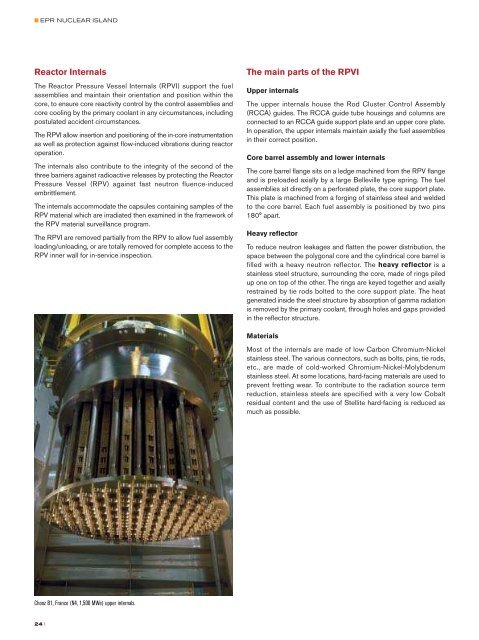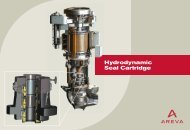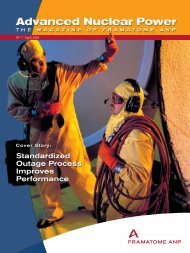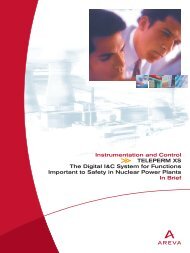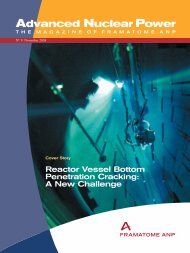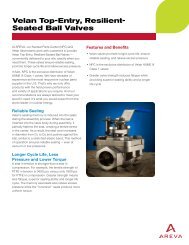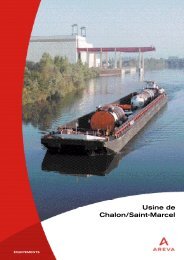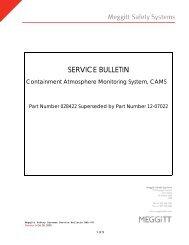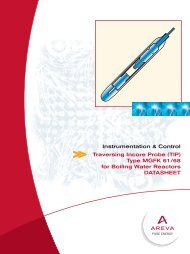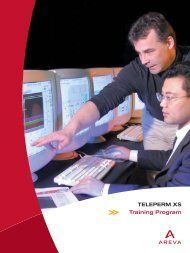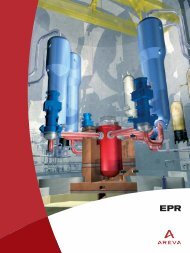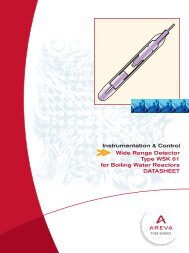Areva EPR
Areva EPR
Areva EPR
Create successful ePaper yourself
Turn your PDF publications into a flip-book with our unique Google optimized e-Paper software.
■ SAFETY<br />
DEFENSE IN DEPTH<br />
The concept of “defense in depth” involves ensuring the resistance<br />
of the protective barriers by identifying the threats to their integrity<br />
and by providing successive lines of defense which will guarantee<br />
high effectiveness:<br />
• first level: safe design, quality workmanship, diligent operation,<br />
with incorporation of the lessons of experience feedback in order<br />
to prevent occurrence of failures,<br />
• second level: means of surveillance for detecting any anomaly<br />
leading to departure from normal service conditions in order to<br />
anticipate failures or to detect them as soon as they occur,<br />
• third level: means of action for mitigating the consequences of<br />
failures and prevent core melt down; this level includes use of<br />
redundant systems to automatically bring the reactor to safe<br />
shutdown; the most important of these systems is the automatic<br />
shutdown by insertion of the control rods into the core, which stops<br />
the nuclear reaction in a few seconds; in addition, a set of<br />
safeguard systems, also redundant, are implemented to ensure the<br />
containment of the radioactive products,<br />
• beyond, the defense in depth approach goes further, as far as<br />
postulating the failure of all these three levels, resulting in a “severe<br />
accident” situation, in order to provide all the means of minimizing<br />
the consequences of such a situation.<br />
† By virtue of this defense in depth concept,<br />
the functions of core power and cooling<br />
control are protected by double or triple<br />
systems – and even quadruple ones as in<br />
the <strong>EPR</strong> – which are diversified to prevent<br />
a single failure cause from concurrently<br />
affecting several of the systems providing<br />
the same function.<br />
† In addition, the components and lines<br />
of these systems are designed to<br />
automatically go to safe position<br />
in case of failure or loss of electrical<br />
or fluid power supply.<br />
The training for steam<br />
generator inspection<br />
illustrates:<br />
† the first level of<br />
defense in depth<br />
relating to the quality<br />
of workmanship,<br />
† the second barrier,<br />
as the training relates<br />
to steam generator<br />
tubes which form part<br />
of the primary system.<br />
Lynchburg technical center (Va, USA): training for steam generator inspection.<br />
46 I


